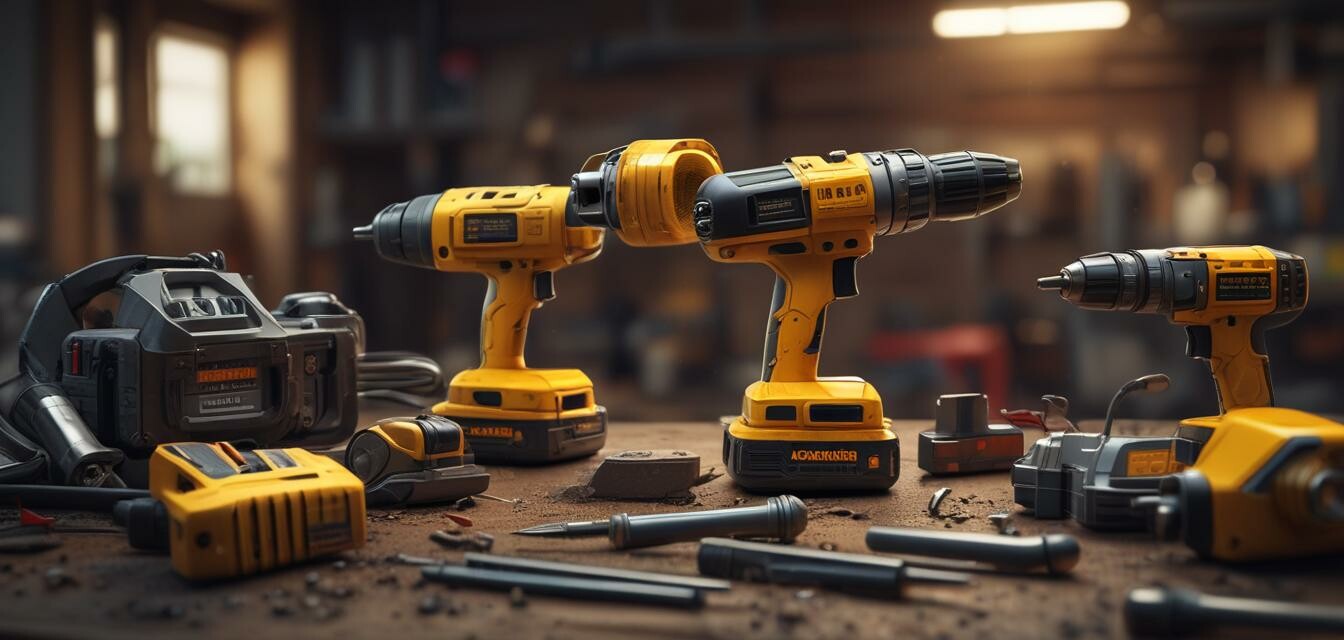
Future of cordless power tools
Key Takeaways
- Battery technology advancements will significantly improve performance.
- Integration of smart technology to enhance user experience and efficiency.
- Increasing emphasis on sustainability and eco-friendly designs.
- Emerging trends will shape the way professionals work and DIY enthusiasts approach projects.
The cordless power tools market has rapidly evolved over the past decade. As we venture into the future, it’s essential to consider how advancements in technology, battery performance, and user innovation will shape this industry. Let's explore the major trends and developments expected to influence cordless power tools in the next decade.
Advancements in battery technology
One of the most crucial aspects of cordless power tools is their battery life and performance. Here are some key developments expected:
- Longer Battery Life: The push for batteries with longer runtimes and quicker charging times is paramount. New technologies will focus on efficiency and longevity.
- More Power: Manufacturers are researching advanced battery chemistries, such as lithium-sulfur, which promise to deliver greater energy density.
- Integration of Solar Technology: Solar-powered charging options may become a viable alternative for users working in remote areas.
Battery test table
| Battery Type | Energy Density (Wh/kg) | Charging Time |
|---|---|---|
| Lithium-Ion | 150-200 | 1-2 hours |
| Lithium-Polymer | 150-250 | 1-1.5 hours |
| Lithium-Sulfur | 300-500 (Projected) | 1-2 hours (Projected) |
Smart technology integration
As technology continues to advance, the incorporation of smart features into cordless power tools is likely to rise:
- Bluetooth Connectivity: Users could connect their tools to smartphones for real-time performance monitoring and diagnostics.
- Customizable Settings: With smart technology, users may have the ability to tailor settings based on their unique projects.
- Safety Features: Advancements in smart technology will enhance safety measures, minimizing accidents and enhancing user protection.
Smart tools comparison
| Feature | Tool A | Tool B |
|---|---|---|
| Bluetooth Connectivity | Yes | No |
| App Integration | Yes | Limited |
| Safety Features | Advanced | Standard |
Sustainability in cordless power tools
With increasing focus on the environment, the cordless power tools sector is shifting towards sustainable practices:
- Eco-Friendly Materials: Manufacturers are expected to use more recyclable and biodegradable materials in tool production.
- Efficient Manufacturing Processes: Enhanced manufacturing methods will aim to reduce waste and energy consumption.
Emerging trends in the industry
Keeping tabs on current trends is vital for both professionals and DIY enthusiasts alike. Here are some expected trends:
- Modular Tool Designs: Tools that allow for parts to be swapped or upgraded will provide greater flexibility and longevity.
- Compact Designs: Increased demand for portable, space-saving tools that offer power without bulk.
- Training & Development: Continued education around the use of new technologies will be crucial for both consumers and professionals.
Conclusion
The future of cordless power tools looks promising with advancements in battery life, smart technology, and sustainable practices shaping the landscape. As consumers, contractors, and DIY enthusiasts, staying informed about these trends can significantly influence the choices we make in tools and equipment. For more insights in the power tools market, check out our Buying Guides and News and Trends.
Pros
- Improved battery technology leads to longer usage times.
- Smart technology enhances efficiency and user experience.
- Sustainable practices cater to environmentally-conscious consumers.
Cons
- Potentially increased costs due to advanced technology.
- Learning curve associated with new smart features.
